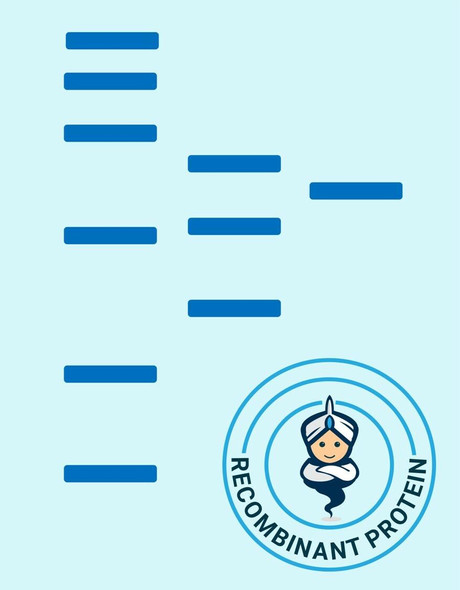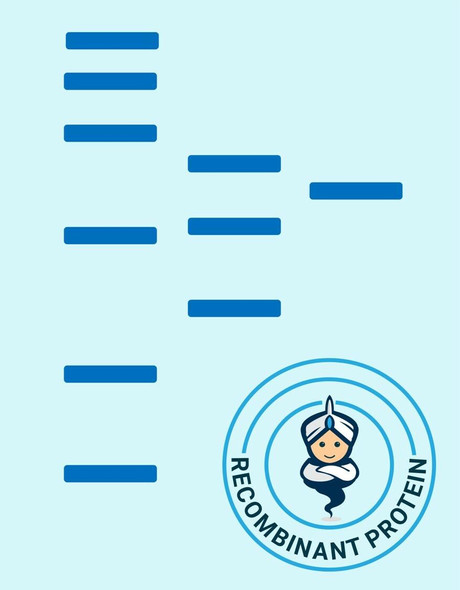Mouse Motch A/NOTCH1 Recombinant Protein (RPES1014)
- SKU:
- RPES1014
- Product type:
- Recombinant Protein
- Host species:
- Human Cells
- Reactivity:
- Mouse
Frequently bought together:
Description
system_update_alt데이터시트
Mouse Motch A/NOTCH1 Recombinant Protein
Mouse Notch1 is a 300 kDa type I transmembrane glycoprotein and it functions as a receptor for membrane-bound ligands Jagged1, Jagged2 and Delta1 to regulate cell-fate determination. Mouse Notch1 is synthesized as a 2531 amino acid (aa) precursor that contains an 18 aa signal sequence, a 1707 aa extracellular domain (ECD) with 36 EGFlike repeats and three Lin12/notch repeats, a 21 aa transmembrane segment and a 785 aa cytoplasmic domain that contains six ankyrin repeats, a glutamine-rich domain and a PEST sequence. Notch1 may play an essential role in postimplantation development, probably in some aspect of cell specification and/or differentiation and may be involved in mesoderm development, somite formation and neurogenesis.
| Product Name: | Mouse Motch A/NOTCH1 Recombinant Protein (RPES1014) |
| Product Code: | RPES1014 |
| Size: | 10µg |
| Species: | Mouse |
| Expressed Host: | Human Cells |
| Synonyms: | Neurogenic locus notch homolog protein 1, Notch 1, Motch A, Mt14,lin-12,Mis6,N1,Tan1 |
| Accession: | Q01705 |
| Sequence: | Ala18-Gln526 |
| Fusion tag: | C-His |
| Endotoxin: | <1.0 EU per µg as determined by the LAL method. |
| Protein Construction: | Recombinant Mouse Notch 1 is produced by our Mammalian expression system and the target gene encoding Ala18-Gln526 is expressed with a 6His tag at the C-terminus. |
| Purity: | > 95% as determined by reducing SDS-PAGE. |
| Mol Mass: | 54.4 kDa |
| AP Mol Mass: | 70 kDa |
| Formulation: | Lyophilized from a 0.2 µm filtered solution of PBS, pH 7.4. |
| Shipping: | This product is provided as lyophilized powder which is shipped with ice packs. |
| Stability and Storage: | Lyophilized proteins are stable for up to 12 months when stored at -20 to -80°C. Reconstituted protein solution can be stored at 4-8°C for 2-7 days. Aliquots of reconstituted samples are stable at < -20°C for 3 months. |










